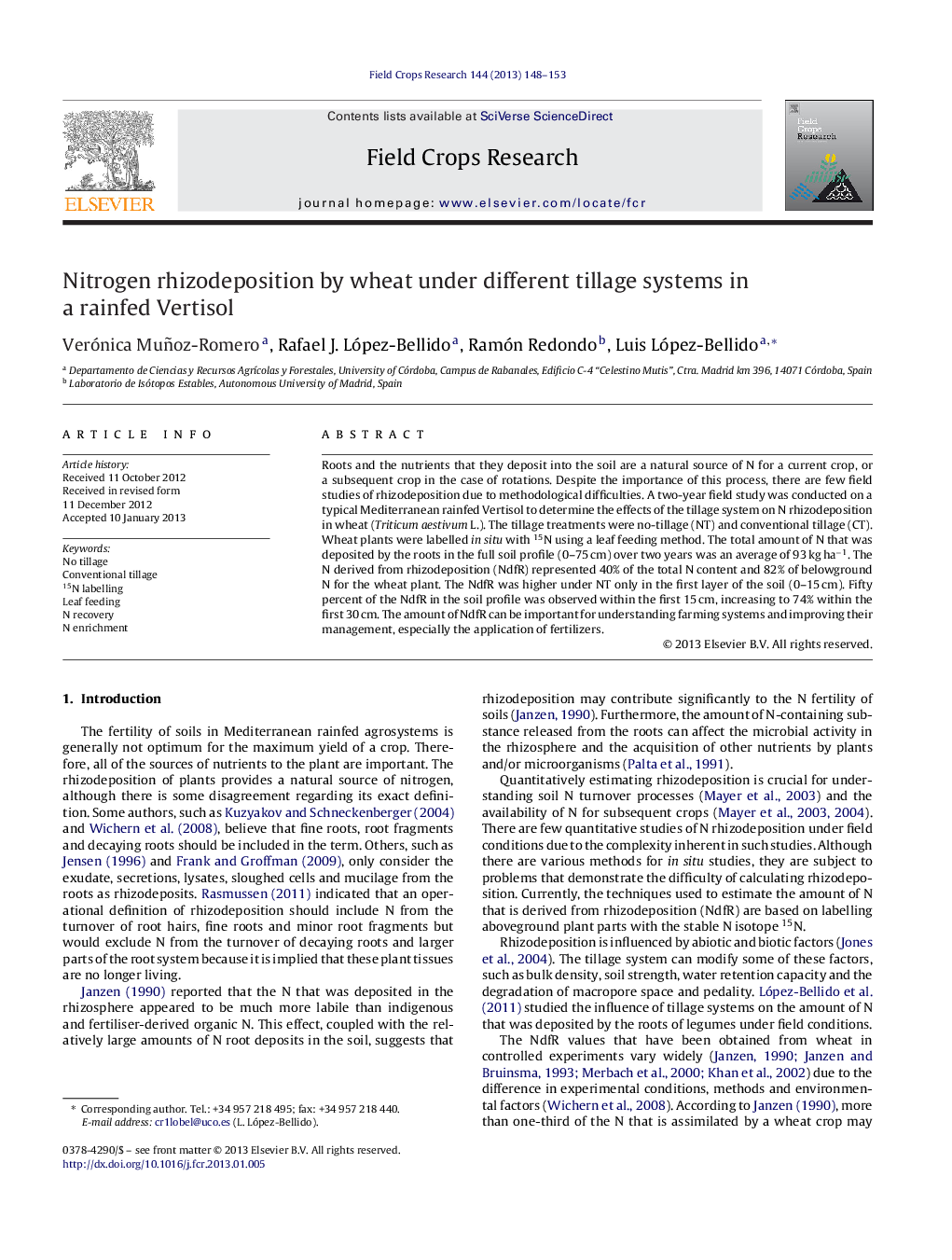| Article ID | Journal | Published Year | Pages | File Type |
|---|---|---|---|---|
| 4510235 | Field Crops Research | 2013 | 6 Pages |
Roots and the nutrients that they deposit into the soil are a natural source of N for a current crop, or a subsequent crop in the case of rotations. Despite the importance of this process, there are few field studies of rhizodeposition due to methodological difficulties. A two-year field study was conducted on a typical Mediterranean rainfed Vertisol to determine the effects of the tillage system on N rhizodeposition in wheat (Triticum aestivum L.). The tillage treatments were no-tillage (NT) and conventional tillage (CT). Wheat plants were labelled in situ with 15N using a leaf feeding method. The total amount of N that was deposited by the roots in the full soil profile (0–75 cm) over two years was an average of 93 kg ha−1. The N derived from rhizodeposition (NdfR) represented 40% of the total N content and 82% of belowground N for the wheat plant. The NdfR was higher under NT only in the first layer of the soil (0–15 cm). Fifty percent of the NdfR in the soil profile was observed within the first 15 cm, increasing to 74% within the first 30 cm. The amount of NdfR can be important for understanding farming systems and improving their management, especially the application of fertilizers.
► The nitrogen derived from rhizodeposition represented 40% of total N uptake of the plant. ► The wheat rhizodeposition contributed 82% of belowground N. ► Fifty percent of the nitrogen rhizodeposited in the soil profile was found in the first 15 cm. ► In general, the nitrogen rhizodeposited by wheat was not influenced by tillage system.
